 Food
Food  Food
Food  History
History 10 Odd Things Colonial Americans Kept at Home
 Weird Stuff
Weird Stuff 10 Superstitious Beliefs That Once Consumed Entire Cultures
 History
History 10 Bizarre Friendly Fire Incidents in Military History
 Technology
Technology 10 Modern Technologies That Accidentally Imitate Ancient Magic
 Mysteries
Mysteries 10 Mysteries of the Human Genome
 Weird Stuff
Weird Stuff 10 Things So Rare They’ve Only Been Found Once
 History
History 10 Legends Whose Last Moments Undid Their Glory
 Health
Health 10 Futuristic Ideas to Treat Common Medical Problems
 Weird Stuff
Weird Stuff Ten Surreal Attempts to Reverse Baldness
 Food
Food 10 Everyday Foods You Didn’t Know Were Invented by the U.S. Military
 History
History 10 Odd Things Colonial Americans Kept at Home
 Weird Stuff
Weird Stuff 10 Superstitious Beliefs That Once Consumed Entire Cultures
Who's Behind Listverse?

Jamie Frater
Head Editor
Jamie founded Listverse due to an insatiable desire to share fascinating, obscure, and bizarre facts. He has been a guest speaker on numerous national radio and television stations and is a five time published author.
More About Us History
History 10 Bizarre Friendly Fire Incidents in Military History
 Technology
Technology 10 Modern Technologies That Accidentally Imitate Ancient Magic
 Mysteries
Mysteries 10 Mysteries of the Human Genome
 Weird Stuff
Weird Stuff 10 Things So Rare They’ve Only Been Found Once
 History
History 10 Legends Whose Last Moments Undid Their Glory
 Health
Health 10 Futuristic Ideas to Treat Common Medical Problems
 Weird Stuff
Weird Stuff Ten Surreal Attempts to Reverse Baldness
10 Overlooked Periods Of Ethnic Cleansing
Every story of ethnic cleansing is heartbreaking. Sadly, some have been almost completely forgotten. They may have been overlooked in favor of others that were perhaps on a larger scale, but they were just as driven by bizarre hatred and unsettling prejudices as any.
10 The Deportation Of The Acadians
Canada is generally thought of as America’s friendlier northern neighbor, but they’ve been responsible for some pretty horrible things, too.
In 1604, the Acadians helped with the founding of Port Royal, settling in their own colony. They allied themselves with the local Mi’kmaq, and even though they were French settlers, they were mostly independent from their ancestral home. By the 1730s, tensions were increasing between Britain and France, and when both countries started trying to increase their foothold in the area, the Acadians were seen more and more as a loose cannon when it came to allegiance. Although they swore to remain neutral in the conflict, 270 Acadians were among those living in a French fort captured by English forces in 1755, further calling their allegiance into question. The British gave the Acadians one chance to declare their loyalty to Britain, and when they refused, the order was given to deport them all. Their land was seized, and they were ordered to leave.
On September 5, 1755, a decree was read that declared all Acadian lands and properties forfeit. When families tried to protest and fight back, armed men descended on their churches during service and surrounded them as land, property, and crops were burned. Although some tried to organize a resistance, it was largely unsuccessful.
Of the 3,100 deported in 1758, 53 percent died during the relocation process. Another 10,000 people were deported before 1763, loaded onto ships and sent to other English colonies, France, or Caribbean islands. Thousands died, and many ended up in Louisiana, establishing the state’s famous Cajun culture.
Acadian lands were resettled by those loyal to the British crown.
9 The Highland Clearances
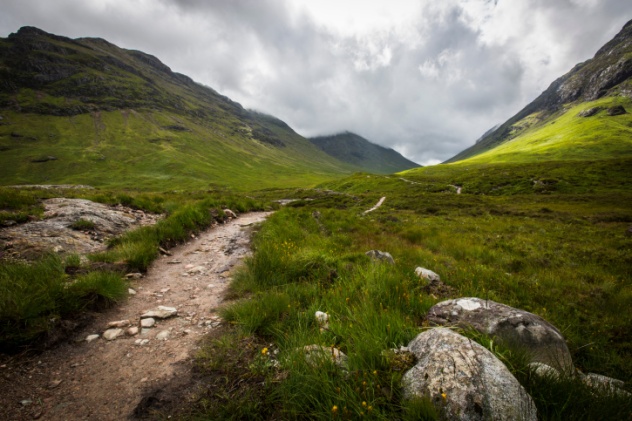
When the Jacobite Rebellion came to a bloody end in 1745, it also meant the end of a centuries-old way of life in the Scottish Highlands. Under the guise of social and agricultural improvement, countless tenant farmers were forced off the land their families had farmed for generations and forced to head into cities or to America in search of a new way to make a living.
The first group of clearances officially started around 1780. Estate owners were given complete control over the people on their land, and that land was infinitely more valuable as grazing land as opposed to farming and fishing. Clearances were on a massive scale. One woman alone, the Countess of Sutherland, owned about a million acres and kicked around 15,000 people off her land. For many of those people, it meant an uprooting from a way of life that had been in place for thousands of years. Highlanders continued to live in close-knit townships where residents built their homes out of clay and brick and relied on each other in a sort of collective co-op setup.
The cultural losses are vast. As late as the turn of the 19th century, families were still living a life that anyone from the 12th century could have easily stepped into. The clearances ended all of that. Not only were families uprooted and destroyed, but the villages were usually burned to make sure people wouldn’t try to stay or come back. It’s long been up for debate as to how violent the clearances were, but archaeological evidence—like broken pottery and furnishings—suggests that it was less than peaceful.
8 The Expulsion Of The Moriscos
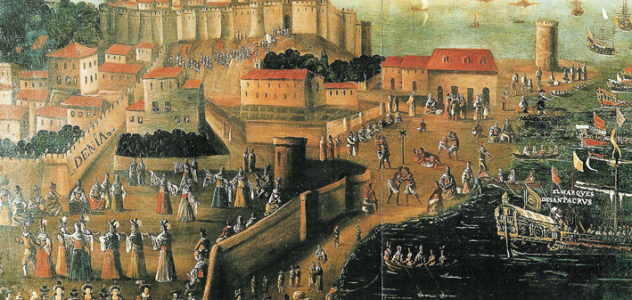
For centuries, Spain and the rest of the Iberian Peninsula had a rich Islamic history. It’s still evident today in their art and architecture. However, in the 15th century, everything went horribly wrong for any non-Christian living in Spain. In regard to 1492, we usually only hear a watered-down version of the exploits of Christopher Columbus, but back home, Ferdinand and Isabella were attempting to cleanse their land of Islam by promising wealth and land to those that converted. When that didn’t work as planned, they started burning everything written in Arabic and confiscating property.
Muslims in Spain were given three options—convert, leave, or die. Open rebellions sprang up across the country, especially in the south. Many people gave the appearance of converting but kept their real religion secret. From September 1609–1610, the real exile began. Region by region, people were ordered to leave Spain. By the end of the year, about 90 percent of Spain’s Muslims had been forced out of the country.
We have no way of telling exactly how many people were moved, but estimates suggest as many as 243,000 people in the first year and another 29,000 in the four years after the expulsions began. Even though the majority of Moriscos had left the country by 1611, more and more legislation was drafted in order to get rid of any of those who remained.
By 1613, no Morisco was allowed on Spanish soil without special permissions, and those that did remain were only allowed in the country because of special protection, usually members of the aristocracy or, strangely, the clergy.
7 The 1911 Tripoli Massacre
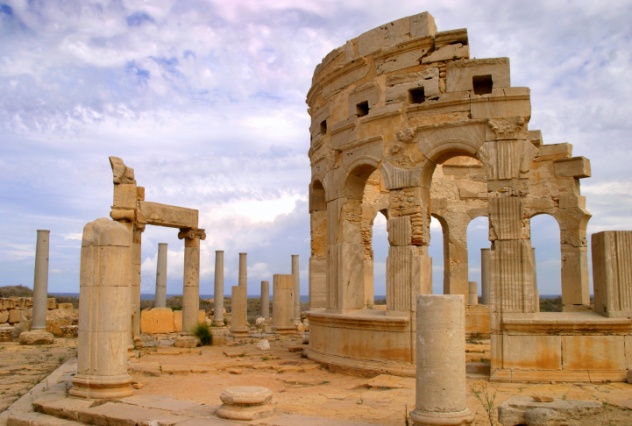
The Tripoli Massacre has the dubious distinction of being the world’s first aerial bombing campaign, and it was carried out against Ottoman-controlled Libya. The bombs that were dropped from above were thrown by hand, but from that moment, war was changed forever.
So was Libya. Far from the strongholds of the Ottoman empires, the Italian aggressors had first thought that they were going to be welcomed as liberators, driving out the Ottoman occupiers. When they found out the hard way that wasn’t the case, they began destroying villages as they moved through. By the end of their occupation, somewhere around 100,000 people had been moved to internment camps or deported, with countless others dying from starvation and disease. Eventually, Libya was declared an Italian province, and Italian settlers moved in, while the native people were either pushed out or went to ground, turning the entire nation into another battlefield.
Over the course of the next few decades, war on a grander scale meant that the expulsion of native Libyans went conveniently overlooked. Italy got back into the good graces of the Allies during the Cold War, and the empire set up by Muammar Gadhafi stole the headlines, becoming more ingrained in popular memory than the Italian push that changed the face of the nation forever.
6 The Edict Of Expulsion
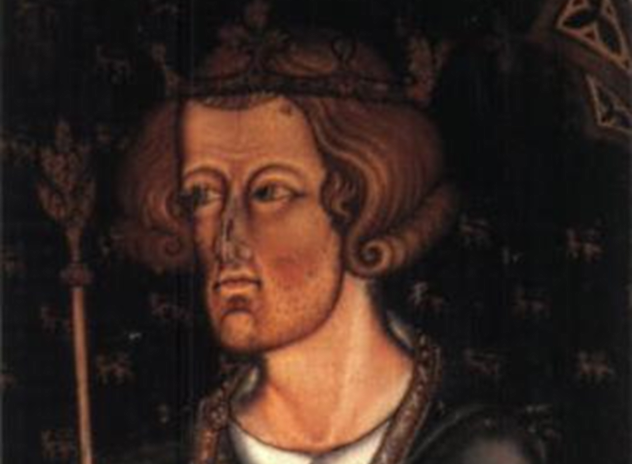
For 366 years, Jews were banned from living in England. About a century after being welcomed into the country by William the Conqueror, rumors of ritual murder and kidnapping began to spring up. Jews in Norwich were accused of kidnapping a Christian child and using him to simulate the crucifixion. That was in 1144, and it was the first case of blood libel on the books in England.
It was the official start of a vicious, downward spiral that included accusation of desecrating the Host, poisoning the wells of Christian neighborhoods, and spreading the plague. Rumors increased tensions, which gave rise to riots. In 1290, Jews were officially banished from the country by Edward I—in spite of a formal investigation by the Pope only a few decades earlier that could find no evidence of the truth of any of the rumors.
Edward ordered all sheriffs to enforce his Edict of Expulsion and to remove all Jews from the country by November 1. They were allowed to leave with only what they could carry, and all their other possessions and land reverted to the king. If there are any questions about why the edicts were really issued, that should clear it up. England was strapped for cash, and Edward’s original move of banning Jews from usury amid accusations of coin-clipping didn’t work. Taking all their property was an improvement for the crown.
The English ethnic cleansing of the Jews made them the first country to do so, and it wasn’t until 366 years later that one of the most universally despised men in history let them back in. At the same time Jews were being kicked out of Spain and Portugal, Oliver Cromwell opened England’s doors to them again with a 1656 oath to not only allow them to resettle in England, but to allow them to keep their faith when they did.
5 The Navajo Long Walk
In 1863, Kit Carson had set up camp at the new Fort Canby, built in Navajo country in northern Arizona. Under military orders, they began what would become the start of renewed aggression against the native people, with the ultimate goal of driving them out of their land. Rather than waging a direct war, US soldiers burned crops and orchards, destroyed food stores, and killed their livestock. Horses and mules were particularly prized, with rewards offered to the soldiers that captured them. By next year, thousands of Navajo had surrendered to whatever fate the government had in store for them.
By the time that the various populations of Navajo had surrendered, somewhere between 9,000–10,000 people were suddenly displaced from lands that had been theirs for generations. When the group left Fort Canby, there were roughly 11,470 people who began the long, grueling march to where they would be resettled in New Mexico. Thousands died on the 500-kilometer (300 mi) walk, including those who were shot by the military when they were unable to keep up with the main group. Disease and death were widespread after the contamination of drinking water, firewood was scarce, and insects destroyed food stores.
Their goal was Bosque Redondo, and when they got there, they found nothing more than homes built from branches and the remnants of canvas tents. The disease that had plagued them throughout the walk continued, and more Navajo died—alongside the Apache that had also been forced to settle there. Again, estimates are difficult, but it’s thought that more than 2,300 people died during the march.
Conditions were so dire that by 1868, a treaty was signed that would allow them to return to the lands that they had just been forced to leave. They received most of their land back, along with livestock and payments for restarting settlements which had been destroyed. Perhaps most ironic is that the Long Walk was done under the command of a man—Kit Carson—who was sympathetic to their plight, marrying two native women and adopting a handful of children.
4 The Relocation Of The Chagossians
The forceful eviction of the native Chagossians from their island in the Indian Ocean began when the British government rounded up their dogs and killed them. The families who lived on the island had taught their dogs to catch the biggest fish they could find and bring them back for dinner. For generations, the Chagossians had lived off the land, surviving mainly on fish, cultivating a peaceful way of life that most of rest of the world can only envy.
In the 1970s, the British government decided to lease the island to the United States for a military base. While the base has been infinitely valuable (it’s been a staging point for conflicts throughout the Middle East), it came at a price that’s still being paid. After their dogs were rounded up and gassed, every Chagossian was shipped off to live and struggle in poverty on an island 1,600 kilometers (1,000 mi) from their homeland. Today, survivors still live on Mauritius, but they’re fighting to get back to the island they were evicted from.
Declassified messages from the late 1960s reveal chilling exchanges between the US and the UK, wherein they plot to leave the island devoid of all life except for seagulls. The reason for the expulsion of the Chagossians is that the US military didn’t want native inhabitants near their base. Arguments that there are native inhabitants near US bases around the world have fallen on deaf ears, and the Chagossians are still fighting for their right to return.
Statements issued by the US State Department say that the agreement as it stands is in effect until December 30, 2036, and neither nation is, at the moment, inclined to change the way things are. So for now, the Chagossians live in poverty, with 15 elders allowed to visit their homeland for a brief period once a year. They say it’s not enough.
3 The Edict Of Fontainebleau
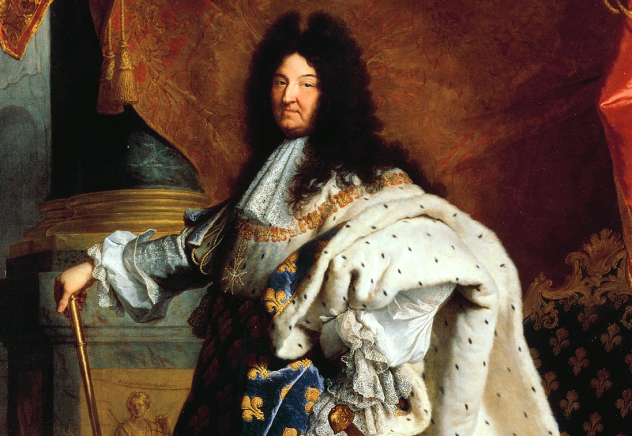
In 1598, Henry IV established a new, safe world in France for practicing Protestants. He promised—officially—that they would be awarded a safe social standing and the (limited) freedom to practice their religion within the country’s borders. It was huge, and he had hopes that it would help to end the ongoing dispute between Catholics and Protestants.
Henry died in 1610, and things started going downhill. By the time Louis XIV took the throne, it was with the rather lofty intention of uniting France in every way, shape, and form—including religion.
He signed the Edict of Fontainebleau in 1685, which revoked all the privileges and safety that Protestants had been given with the previous Edict of Nantes. The new edict stated that all reformed churches were to be razed, and all clergy could either convert or leave. Protestant children were to be baptized and converted to Catholicism, and teaching the Protestant faith was forbidden. Protestants who had already left France before the signing of the edict had four months to come and get their property, and those that stayed in the country could remain as long as they didn’t hold any services.
Convincing Protestants to convert had begun in earnest about four years before the edict was signed, with the establishment of the so-called dragonnades. Dragoons, the king’s soldiers, were forcefully lodged in Protestant homes and given free license to do whatever they pleased while they were there, with the end goal of conversion. The dragoons were supported and fed by their unwilling hosts, and when the food and money ran out, that was typically when the abuse of men, women, and children began. Within a few months of the dragoons taking up residence in Poitou, Catholic priests reported 38,000 conversions. With Poitou satisfactorily Catholic, the dragoons were moved to the next town.
The ethnic cleansing of the Protestants continued throughout Louis XIV’s reign. In 1686, Protestant children were ordered to be removed from their homes and adopted into Catholic families, and those that survived after refusing Catholic sacraments of death were sentenced to the galleys or prison. Those that died after refusing them were dragged into the streets and left to rot.
2 Mussolini’s Italianization Policies
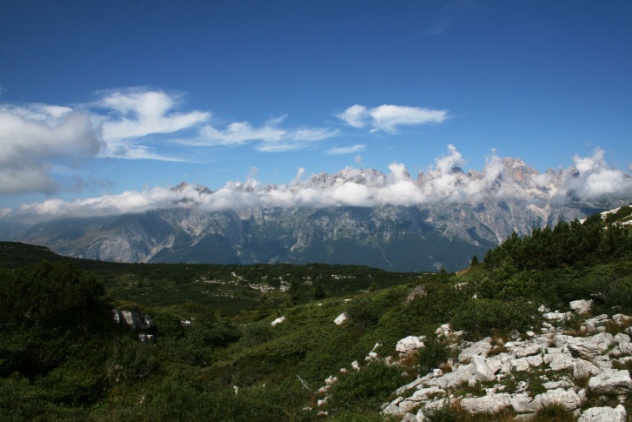
At the same time that the Third Reich was painting itself as the master race, one of their allies was hard at work at cleansing their own country of all German influences.
When Mussolini rose to power in 1922, he started a policy of “Italianization” that strove to cleanse Italy of anyone who was deemed a stranger to the nation, and that included the residents of the heavily German area of South Tyrol. With an estimated 75 percent of people speaking German, they had their work cut out for them.
Across the country, Italian was the only language to be taught or used. Civil servants and office-holders who spoke German were fired, immigration was halted, and even place names that had roots in other languages were changed. The policy of Italian as the only language even extended as far as gravestones, which were wiped of any German words. Textbooks were rewritten to eliminate German influences and customs, and the result was an underground network of so-called catacomb schools that were established to continue teaching German history and language. Teachers were mostly young women with no families to put at risk. One, Angela Nikoletti, was arrested, jailed, and ultimately died after contracting tuberculosis in jail and seeking safety in a cave upon her release.
Hitler and Mussolini eventually settled on drawing up the Option fur Deutschland, which gave people the choice to either remain in Italy and accept the complete eradication of their German heritage and culture or move to Germany and join the Nazi party. By the time the plan’s deadline of December 31, 1939, hit, an estimated 86 percent of people chose to leave Italy. About 75,000 people left, and after the end of the war, about 50,000 of them returned.
1 Canada Exiles Its Japanese Citizens
We’re all pretty familiar with the shockingly horrific treatment of thousands of Japanese-American citizens during World War II. Less known is the fact that Canada not only did the same thing, but at the end of the war, they forced many of their own citizens back to Japan, a war-torn country that many of them had never even seen before.
After Canada declared war on Japan, Major General Ken Stuart stated, “From the Army point of view, I cannot see that Japanese Canadians constitute the slightest bit of menace to national security.” His words didn’t matter in the least, and by February 1942, orders were given to evacuate all Japanese Canadians and relocate them into what were deemed “protective areas.” Thousands of people were given a matter of hours to collect what they could before being loaded onto trains and taken to ghost towns. With no running water or electricity, the ghost towns of British Columbia became holding centers for thousands of men, women, and children. About 20,800 people were moved, and of those, more than 13,000 were Canadian citizens who were born in the country. Their property was seized and much of it sold to finance the cost of moving them.
It didn’t end when the war was over, either. Those who were moved to internment camps were given two choices, and neither was good. In order to prove their loyalty to their new nation (which was the only country that many had ever known), they were told that they needed to move to the eastern part of Canada. Those who didn’t want to leave their homes in British Columbia were given only one other choice—repatriation to Japan.
About 4,000 people, roughly half of whom had been born in Canada and a third of whom were under 16 years old, were shipped back to Japan. It was only in 1949 that they were given the option to return to Canada, to their original homes in British Columbia, with all of their rights and citizenship privileges restored. Rebuilding proved all but impossible, especially considering that new immigrants from Japan were only allowed into Canada with changes in laws that didn’t happen until 1967.